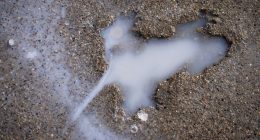Twin academics Perry Zurn and Dani S Bassett fought to forge idiosyncratic paths through academia – then put that knowledge to use in a seven-year study of how we learn
In the early 17th century, there was a room in a house in Copenhagen bursting with hundreds of objects: bones and shells and taxidermised birds, not to mention weapons and rocks and a stuffed polar bear cub hanging from the ceiling. This was the Museum Wormianum, collected and curated by the Danish physician and philosopher Olaus Wormius, or Ole Worm to most. Four hundred years later, this quintessential cabinet of curiosities still inspires philosophy professor Perry Zurn and bioengineering professor Dani S Bassett, identical twins. What provoked Worm to collect? Which electrical signals were firing in his brain? How would the Enlightenment eccentric have behaved given access to Wikipedia?
These are questions asked in Zurn and Bassett’s latest work, Curious Minds: The Power of Connection, in which they investigate the neurological, historical, philosophical, and linguistic foundations of curiosity. What exactly is curiosity? Where does it come from and how does it work? In a manuscript peppered with questions, the academics explore everything from Plutarch to Google algorithms, to argue that curiosity is networked. “It works by linking ideas, facts, perceptions, sensations and data points together,” they write in the book, “Yet it also works within human grids of friendship, society and culture.”



